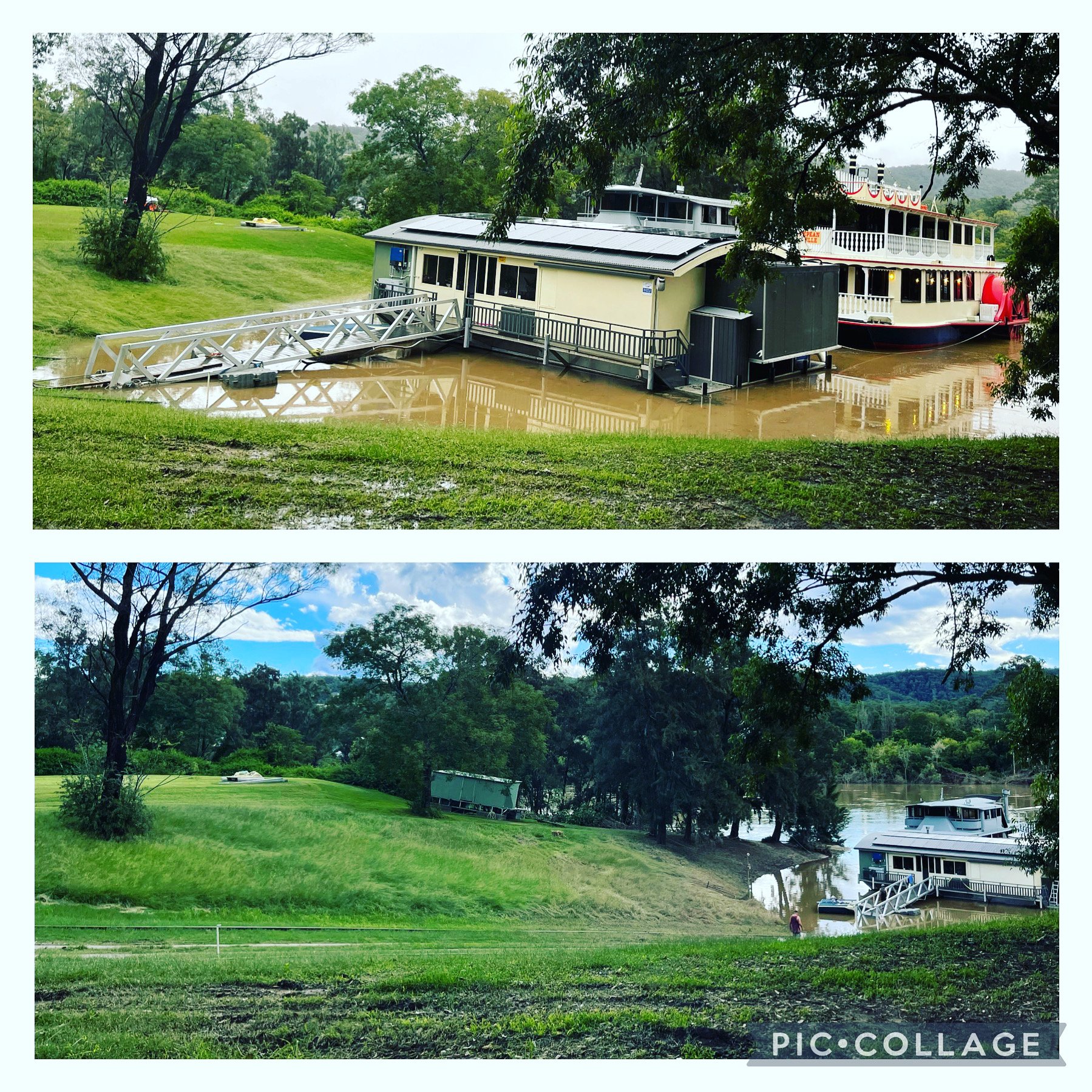How do we protect the Nepean Belle during a Flood?
/Way back when, to Chris and I unending days of rain meant loads of traffic and delays getting to work, cancelled kids sports with weekends spent indoors watching movies, and watching the washing pile grow…. and grow. (I think I was the only one watching the washing pile…!). No big deal, just a hassle. And then in 2013 we bought the Nepean Belle!
April 2015 was our first flood on the Nepean River. It was only minor but it was enough to teach us the basics of what we needed to keep our boats safe. It gave us the ability to put together a flood management plan based on our first-hand experience.
We have enacted the plan a few times over the years and after each flood we discuss what changes we made at the time, or could make, to improve the plan. You know, “work smarter, not harder”.
The flood in March 2021 was the first “big” flood we had and the speed at which the river rose caught us by surprise. One of the learnings from that flood (and an update to the plan) was to leave our flood lines (ropes) in place around the large trees at the slipway to enable us to set and prepare at short notice.
That small change made us much better prepared for the March 2022 flood. Although the river did not rise as high or as fast as it did in 2021, our confidence grew and with the preparation already in hand it enabled us to add more improvements to the way we manage when we are in the thick of it.
Capt. Chris is an ideas man - he is always trying to improve what we do; making processes more efficient; giving our customers a better experience; and making life easier during a natural disaster event when there’s a lot going all around us.
How do we protect the boats?
Our office and our two boats (Nepean Belle and Penrith Platypus) are moored in a ‘bay’ on the Nepean River that was cleverly designed as part of the Slipway when the Belle was launched in 1982. Our group of vessels, or ‘flotilla’ as we call it, is secured to land using a series of ‘lines’ (ropes and steel cables) on both the front and rear (known as ‘spring’ and ‘stern’ lines).
When the river rises, it becomes wider and the flow of the river increases. The higher the river rises the more dangerous the flow becomes, and our bay offers less protection on the western (river) side. In order to protect the flotilla from the powerful flow of the river we tie up to our flood lines, unhook our normal lines and drive the vessels eastward, toward the shore and out of the flow.
I say ‘we’ however it is essentially Chris doing all the work with my contribution being less productive. I’m the one who does the worrying for all of us - food, dry clothes, kids, social media, weather warnings, our passengers, bookings, cruise schedule and everything else. Chris is always super calm and level headed and he’s definitely the one you want in charge in stressful times (which is why he’s the Captain).
Each time Chris adjusts the flood lines, he allows enough for a one-metre height increase. He checks the river level at 15-minute intervals which allows him to lengthen the lines and manage the process based on the speed of the flood. This means when the river is in flood, Chris is staying on the boats and often only able to catnap for short periods.
When the river level peaks he reverses the process and shortens the lines until he is in a position to reattach our normal spring and stern lines. This part is particularly tricky as the flotilla needs to be in the correct position as the water recedes – we don’t want to find ourselves beached on a power pole or on the bank of the bay!
We have also learned that the river can recede as quickly as it rises and this is why Chris will stay onboard the vessels until he is able to safely secure them to their normal spring and stern lines. He is usually onboard for at least a week, sometimes longer.
This picture collage taken in 2021 explains how we protect the flotilla. It shows the position using our flood lines when the river level is high (top) and normal position in the bay when we are not in flood (bottom).
Carol Bennett
Updated 6 July 2022

